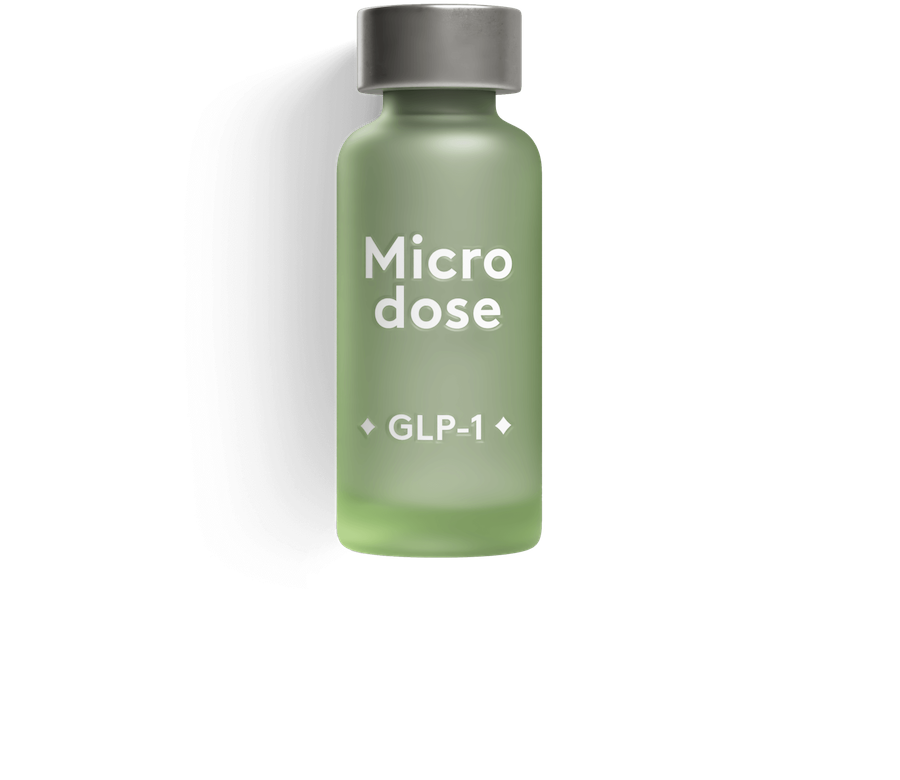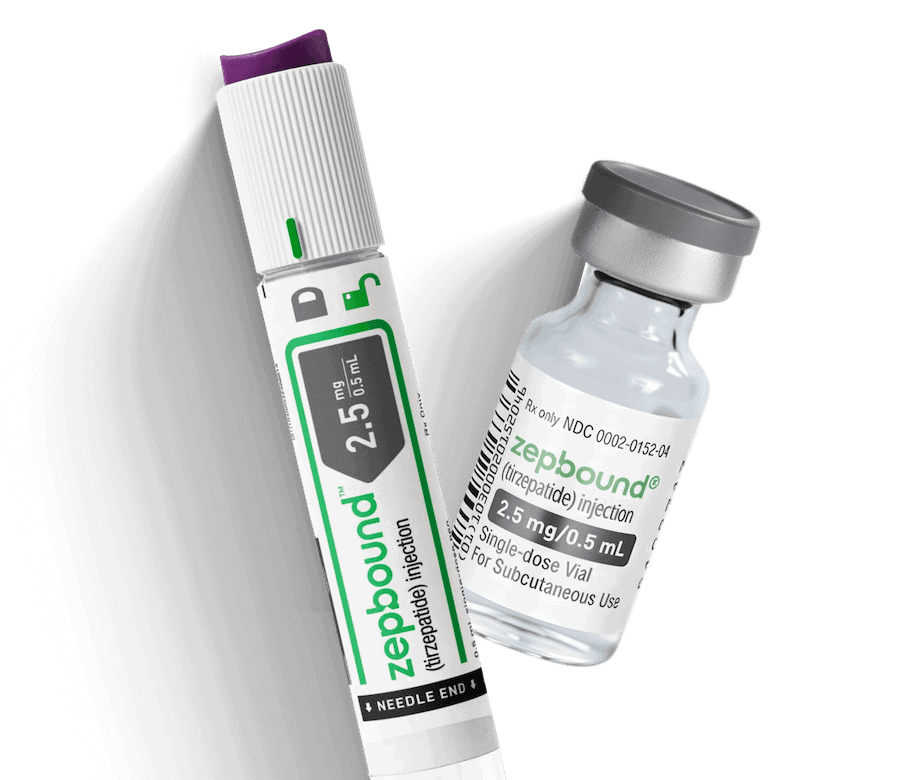When you think about weight loss foods, steak might not be the first thing that comes to mind. But here’s the thing: lean cuts of steak, like sirloin, are packed with protein. A 3.5-ounce (100g) serving of sirloin delivers an impressive 30 grams of complete protein, which is over 60% of your daily protein needs in one serving.
Choosing the right cut makes all the difference. Lean cuts like sirloin and flank steak clock in around 200 calories per 3.5 ounces, while marbled cuts like ribeye can pack nearly 300 calories in the same serving size. When you prepare it in a healthy way—think grilling, broiling, or pan-searing—you maximize the health benefits while keeping calories in check.
Protein isn’t the only health benefit of steak. It can help maintain muscle mass while you’re in a calorie deficit and deliver essential nutrients like iron and B vitamins that your body needs during weight loss. That same 3.5-ounce serving also delivers over 100% of your daily vitamin B12 needs, 69% of selenium, and 59% of zinc.
Rx weight-loss, the right way, with Noom
Get access to prescription weight loss medication with Noom.✅ Quick answer
Yes, steak can be a valuable part of a weight loss diet when you choose lean cuts and watch your portions.
✅ Why steak can support your goals:
- It’s very satisfying – Steak’s protein content keeps you satisfied. This means you’re less likely to reach for snacks or eat more than you intend to at your next meal.
- It will help preserve muscle – When you’re losing weight, you want to lose fat, not muscle. The high-quality protein in steak provides essential amino acids to maintain and even build lean muscle mass, especially when combined with strength training.
- It might give your metabolism a boost– Your body burns more calories digesting protein than it does carbohydrates or fat. This “thermic effect” gives your metabolism a helpful boost throughout the day.
⚠️ Things to be mindful of:
- Serving size matters – A typical restaurant portion is much larger than a 3.5-ounce serving, making it easy to go over your daily calorie goals if you’re not careful with portions.
- It can be high in saturated fat – Many popular cuts contain high amounts of saturated fat, which might impact heart health and add calories. Choosing lean cuts and trimming visible fat can lower both of these.
- It doesn’t have fiber – Steak doesn’t have fiber, so it’s best paired with high-fiber foods.
🥗 Nutrients in lean sirloin steak (per 3.5 oz/100g serving)
| Nutrient | Amount | % RDA* |
|---|---|---|
| Calories | 200 calories | 10% |
| Protein | 30.5 g | 61% |
| Total carbs | 0 g | 0% |
| Fiber | 0 g | 0% |
| Sugars | 0 g | — |
| Total fat | 7.8 g | 10% |
| – Saturated fat | 3.0 g | 15% |
| – Monounsaturated fat | 3.3 g | — |
| – Polyunsaturated fat | 0.3 g | — |
| Omega-3 | 31 mg | — |
| Omega-6 | 290 mg | — |
Lean sirloin is one of the best steaks to eat if weight loss is your goal. You’ll get over 60% of your daily protein needs for just 200 calories. Be aware that even lean sirloin has 15% of your daily limit of saturated fat per 3.5 ounces, so portion control matters.
Sign up for Noom Digest!
Stay on top of your wellness journey with the latest Noom news, thoughtful articles, and a healthy dose of inspiration delivered right to your inbox.Steak is naturally low-carb, and it won’t spike your blood sugar. This can help with appetite control and makes it an excellent choice for low-carb dieters.
*Recommended dietary allowance (RDA) is defined as the average daily amount of nutrients needed to meet the requirements of nearly all healthy people in a specific group.
💊 Vitamins & minerals in lean sirloin steak (per 3.5 oz/100g serving)
| Vitamin/mineral | Amount | % RDA* |
|---|---|---|
| Vitamin B12 | 2.6 µg | 108% |
| Selenium | 38.1 µg | 69% |
| Zinc | 6.5 mg | 59% |
| Niacin (B3) | 4.1 mg | 26% |
| Phosphorus | 269 mg | 22% |
| Choline | 105 mg | 19% |
| Vitamin B6 | 0.6 mg | 35% |
| Iron | 2.5 mg | 14% |
| Potassium | 389 mg | 8% |
| Magnesium | 27.0 mg | 6% |
Steak is packed with nutrients, delivering over 100% of your daily B12 needs and significant amounts of selenium and zinc. These nutrients are crucial for energy metabolism, immune function, and hormone production, all important factors during weight loss. The type of iron in steak is also more easily absorbed than plant-based iron, making it particularly valuable for preventing deficiency.
🥩 Popular steak cuts compared (per 3.5 oz/100g serving)
Different cuts of steak vary significantly in their calorie and fat content. Here’s how the most popular cuts stack up. Keep in mind that this is for a 3.5-ounce serving; most of these are served in larger portions in restaurants.
| Cut | Calories | Protein | Total fat | Saturated fat |
|---|---|---|---|---|
| Flank steak | 192 | 28.7g | 7.6g | 3.2g |
| Sirloin (lean) | 201 | 30.5g | 7.8g | 3.0g |
| Skirt steak | 215 | 26.7g | 11.1g | 4.5g |
| Filet mignon | 227 | 30.0g | 11.0g | 4.2g |
| Strip steak | 244 | 28.0g | 13.8g | 5.4g |
| Ribeye | 291 | 25.0g | 20.8g | 8.7g |
For weight loss, sirloin and flank steak offer the best combination of high protein and lower calories. Filet mignon is tender and relatively lean, but is often the most expensive. Ribeye is delicious, but nearly 100 calories higher per serving due to extra fat. Strip steak provides a good middle ground between flavor and nutrition.
🔍 Nutrient breakdown
Glycemic index (GI) of steak
✔️ Glycemic index: 0 (Low)
💡 Tip: Foods with zero carbs like steak don’t raise blood sugar levels, helping prevent energy crashes and controlling hunger between meals.
Is steak high in protein?
✔️ Yes – Steak contains 30.5g of protein per 3.5 oz (100g) serving, making it one of the most protein-dense foods available. This complete protein provides all essential amino acids for muscle maintenance and growth.
🔹 Better protein alternatives: Chicken breast | salmon | Greek yogurt
Is steak high in fiber?
❌ No – Steak provides 0g of fiber per 3.5 oz (100g) serving. As an animal product, it contains no dietary fiber, so you’ll need to pair it with vegetables or whole grains to meet your daily fiber needs.
💡 Tip: Aim for 25-30 grams of fiber daily from plant sources to support digestion and enhance meal satisfaction.
Is steak low in carbs?
✔️ Yes – Steak has 0g of carbs per 3.5 oz (100g) serving, making it perfect for low-carb and ketogenic diets. The absence of carbs means it won’t affect blood sugar or insulin levels.
💡 Tip: Use steak as your protein base and get your carbs from nutrient-dense vegetables, legumes, or whole grains.
Is steak gluten-free?
✔️ Yes – Plain steak is naturally gluten-free. However, be cautious with pre-marinated steaks or restaurant preparations that may contain gluten-containing sauces or seasonings.
Is steak good for fat loss?
✔️ Yes – The high protein content supports fat loss by increasing satiety, preserving muscle mass during weight loss, and boosting metabolism through the thermic effect of food.
🍽️ Diet compatibility: Which diets include steak?
| Diet | ✅/❌ | Why |
|---|---|---|
| Keto | ✅ | Perfect for keto with zero carbs and high fat content. Helps meet protein and fat macros while maintaining ketosis. |
| Paleo | ✅ | Fits perfectly as an unprocessed, whole food that aligns with ancestral eating patterns emphasized in paleo diets. |
| Mediterranean | ✅ | Can be included in moderation (a few times per month) while emphasizing fish, poultry, and plant proteins as primary sources. |
| Vegan | ❌ | Not compatible as vegans avoid all animal products. Plant-based proteins like lentils and tofu are used instead. |
| Gluten-free | ✅ | Naturally gluten-free when prepared without gluten-containing marinades or seasonings. Safe for celiac disease. |
Steak works exceptionally well for high-protein, low-carb diets like keto and paleo. For heart-healthy approaches like the Mediterranean diet, it plays a supporting role rather than starring as the main protein source. The key is matching your steak consumption to your chosen dietary philosophy while maintaining overall balance.
🌟 Is steak healthy? What are the health benefits
Metabolic health: Is steak good for your metabolism?
- ✔️ Boosts metabolism? Yes – The high protein content creates a significant thermic effect, with your body burning 20-30% of protein calories during digestion and metabolism. ❔
- Improves insulin sensitivity? Mixed data – Low-carb, high-protein diets can improve blood sugar control short-term, but some studies link high red meat intake to increased diabetes risk long-term.
- ✔️ Effect on fat storage? Helps prevent – By promoting satiety and preserving muscle mass, steak helps create conditions less favorable for fat storage while supporting a higher metabolic rate.
Cholesterol impact: Does steak affect cholesterol levels?
- ❌ Lowers LDL? No – The saturated fat in steak can raise LDL (bad) cholesterol levels, particularly in fatty cuts. Choosing lean cuts and limiting portions helps minimize this effect. ❔
- Raises HDL? Possibly – Some studies suggest moderate consumption may slightly increase HDL (good) cholesterol when replacing refined carbs, though results are mixed.
- ⚠️ Overall heart impact? Unfavorable if consumed in excess – High consumption of red meat, especially fatty cuts, is linked to increased cardiovascular risk. Moderation and choosing lean cuts are key.
💡 Tip: Use cooking methods like grilling or broiling that allow fat to drip away, and avoid adding butter or oil during preparation.
Can I eat steak for a calorie deficit?
- ✔️ Yes, with portion awareness – A 3.5-5 oz (100-150g) serving of lean steak provides excellent satiety for around 200-300 calories, making it easier to stick to your calorie goals without feeling deprived.
💡 Tip: Use a food scale to measure portions accurately and pair with high-volume, low-calorie vegetables to create satisfying meals.
Is steak rich in antioxidants?
✔️ Limited – While not as rich as fruits and vegetables, steak contains selenium and zinc (important antioxidant minerals) plus carnosine, a compound with antioxidant properties.
Does steak support gut health?
❌ No – Steak lacks fiber and prebiotics that feed beneficial gut bacteria. High red meat intake with low plant fiber is associated with less diverse gut microbiomes.
Does steak support digestion?
✔️ Neutral to positive – The body efficiently digests meat proteins through stomach acid and enzymes. However, large portions of fatty cuts may cause digestive discomfort in sensitive individuals.
Does steak help you feel satiated and less hungry?
✔️ High satiety – Protein is the most satiating macronutrient, and steak’s high protein content significantly reduces hunger hormones while increasing fullness signals.
💡 Tip: Combine steak with high-fiber vegetables like broccoli or a large salad to maximize fullness and meal satisfaction.
Does steak help with nighttime cravings?
✔️ Yes – A protein-rich dinner helps stabilize blood sugar levels throughout the evening, preventing the crashes that trigger late-night cravings for sugary snacks.
💡 Tip: Include steak in your dinner alongside complex carbs and vegetables for the most stable blood sugar response.
Does steak help reduce inflammation?
❌ No – High consumption of red meat, particularly cuts high in saturated fat, is generally associated with increased inflammatory markers in the body.
Is steak beneficial for brain health?
✔️ Yes – Rich in vitamin B12 (essential for nerve function) and heme iron (crucial for oxygen transport to the brain), supporting cognitive function and mental energy.
Can steak improve skin and hair health?
✔️ Yes – High-quality protein provides amino acids needed for collagen and keratin production, while zinc supports skin repair and hair strength.
Can steak help balance hormones?
✔️ Limited evidence – Zinc is essential for testosterone production, and dietary cholesterol serves as a precursor for steroid hormones. Adequate protein supports overall endocrine function.
💡 Tip: Balance steak consumption with plenty of vegetables and healthy fats for optimal hormonal health.
🍽️ Best ways to eat steak for weight loss
- Grilling or broiling – These methods allow excess fat to drip away while adding flavor through caramelization. Season with herbs and spices instead of high-calorie sauces to avoid adding calories.
- Pairing with non-starchy vegetables – Create volume and add fiber by serving a modest portion of steak (3.5-5 oz) with a good portion of vegetables like asparagus, broccoli, or a mixed green salad.
- Proper portion control – Stick to palm-sized portions or use a food scale.
🍏 Best alternatives & comparisons (per 3.5 oz/100g serving)
| Food | Calories | Carbs | Fiber | Protein | Fat |
|---|---|---|---|---|---|
| Lean sirloin steak | 201 | 0g | 0g | 30.5g | 7.8g |
| Chicken breast (skinless) | 165 | 0g | 0g | 31g | 3.6g |
| Salmon (wild Atlantic) | 142 | 0g | 0g | 20g | 6.3g |
| Pork tenderloin | 143 | 0g | 0g | 26g | 3.5g |
| Lentils (cooked) | 116 | 20g | 7.9g | 9g | 0.4g |
Chicken breast and pork tenderloin offer similar protein with fewer calories and less saturated fat. Salmon provides heart-healthy omega-3 fatty acids along with quality protein. Plant-based options like lentils are much lower in calories and provide valuable fiber and complex carbs, though you’d need larger portions to match the protein in steak.
Frequently asked questions about steak and weight loss
Can I eat steak every day for weight loss?
While steak can be part of a healthy diet, eating it every day isn’t necessary and may not be the best move for long-term health. Aim for 2 to 3 servings per week and vary your protein sources with fish, poultry, and plant-based options for better nutritional balance.
Which steak cut is best for weight loss?
Sirloin and flank steak are your best bets, offering the most protein with the fewest calories. Filet mignon is also relatively lean but more expensive. Limit ribeye and other heavily marbled cuts if weight loss is your primary goal.
How much steak should I eat for weight loss?
Stick to 3.5 to 5 oz (100-150g) portions, which provide 25 to 30g of protein for 200-300 calories. This palm-sized serving will keep you full without too many calories.
Is grass-fed steak better for weight loss?
Grass-fed steak has a slightly better fatty acid profile with more omega-3s, but the calorie and protein content are very similar to grain-fed. For weight loss specifically, the difference is minimal. Portion control matters more than what the animal was fed.
Can I eat steak on the keto diet?
Absolutely! Steak is perfect for keto because it has no carbs. It helps you meet your protein needs while maintaining ketosis. Just watch portions since calories still matter for weight loss, even on keto.
Should I avoid steak if I have high cholesterol?
If you have high cholesterol, choose the leanest cuts like sirloin or filet mignon, trim all visible fat, and limit portions to 3.5 oz (100g) servings. Consider having steak 1 to 2 times per week rather than daily, and pair it with cholesterol-lowering foods like oats and beans. And, of course, always follow the advice of your doctor.
🧠 The bottom line: Is steak good for weight loss?
Steak can definitely have a place in your weight loss plan when approached thoughtfully. Its biggest advantage is the incredible protein content—30+ grams per serving—which helps you feel full and preserve muscle mass. These aren’t small benefits; they’re the kind of advantages that can make the difference between a diet you can stick to and one that leaves you hungry.
The key is being smart about your choices. Lean cuts like sirloin give you all the protein benefits without excessive calories or saturated fat. Stick to palm-sized portions, use healthy cooking methods like grilling, and pair your steak with plenty of vegetables. This approach lets you enjoy satisfying, flavorful meals while staying on track with your goals.
Remember, sustainable weight loss isn’t about perfection; it’s about finding an eating pattern you can maintain long-term.
📖 Scientific evidence
- High-protein diets enhance satiety and preserve muscle mass (American Journal of Clinical Nutrition, 2015) – Research shows that eating 25 to 30 grams of protein per meal improves appetite control and body weight management while preserving lean muscle mass during weight loss.
- Moderate red meat intake doesn’t harm heart health (Current Dev. in Nutrition, 2024) – A review of clinical trials found that eating about 1 to 1.5 ounces of cooked red meat per day—roughly a small steak a few times a week—had no significant effect on cholesterol, triglycerides, or blood pressure.
- Protein’s thermic effect boosts metabolism (Journal of the American College of Nutrition (2019) – Studies suggest that high-protein foods like red meat increase daily energy expenditure through the thermic effect of food, with the body using 20-30% of protein calories for digestion and metabolism.
- Unprocessed red meat shows weak disease links (Nature Medicine, 2022) – A large review found only small, uncertain associations between red meat and risks like cancer, heart disease, and diabetes, with no link to stroke.
- Nutrients in beef may support physical and cognitive function (ScienceDirect, 2022) – Studies suggest that nutrients in beef—like highly bioavailable protein, iron, zinc, and B-12—are linked to better outcomes in older adults, including preserved lean mass, improved mood, and sharper cognitive function
Why you can trust us
At Noom, we’re committed to providing health information that’s grounded in reliable science and expert review. Our content is created with the support of qualified professionals and based on well-established research from trusted medical and scientific organizations. Learn more about the experts behind our content on our Health Expert Team page.











